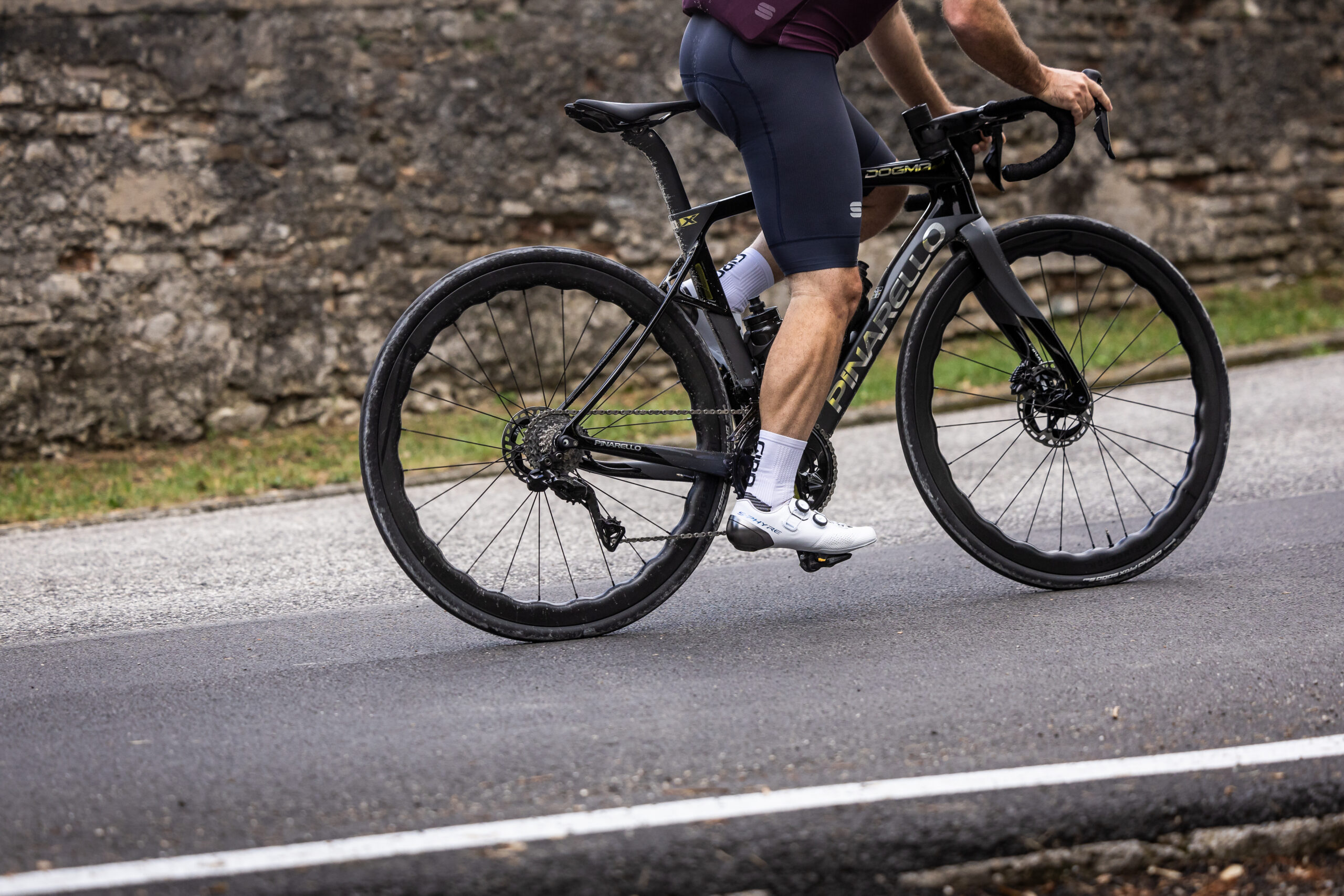A four-course meal is typically not how I would start a ride. But in Italy, things are a bit different. Fitting perfectly into my ‘ride to eat’ mentality, we transitioned from the picturesque Borgoluce cafe to the latest creation of another well-known brand from Treviso.


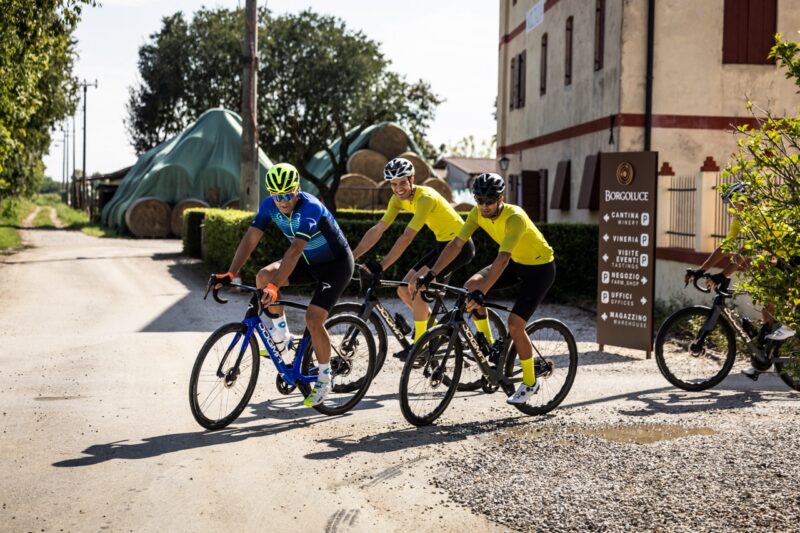
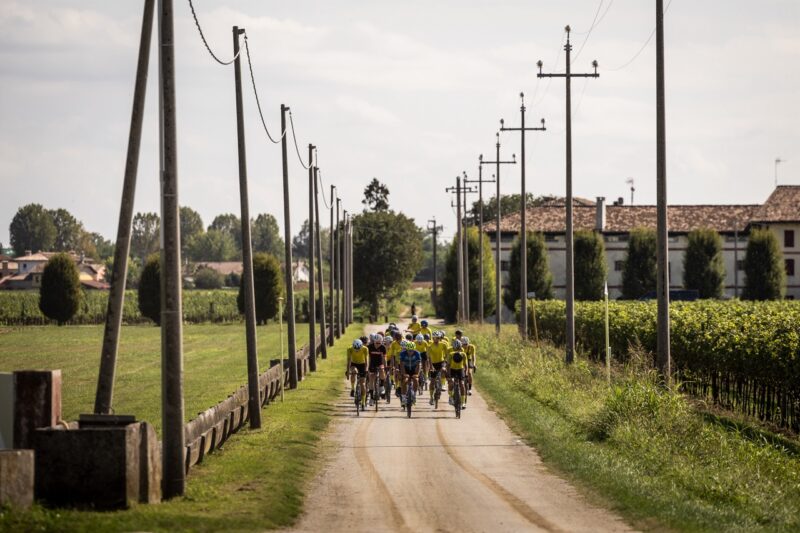
Ultimately, we were in Italy to ride the Dogma X. The newest endurance road bike from Pinarello, though the launch coincided with additions to the X-Series as well. Given that most of the cycling journalists in attendance like to ride fast, the Dogma X was the main attraction and one that I was quite interested in testing out.
Admittedly, I’ve never been much of a Pinarello Stan, though I can certainly appreciate the heritage of the storied brand. Along those lines, I’m also not a huge fan of purpose-built road race bikes, as I’m not a racer. This is why the Dogma X was so appealing.
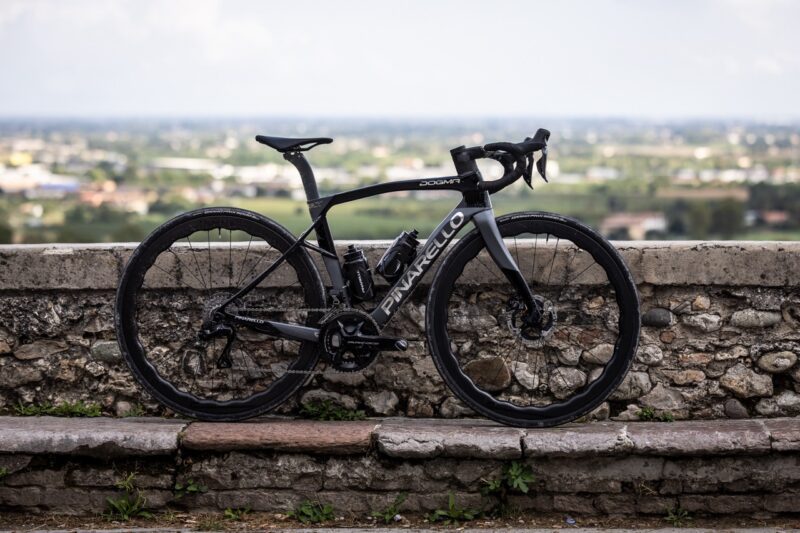
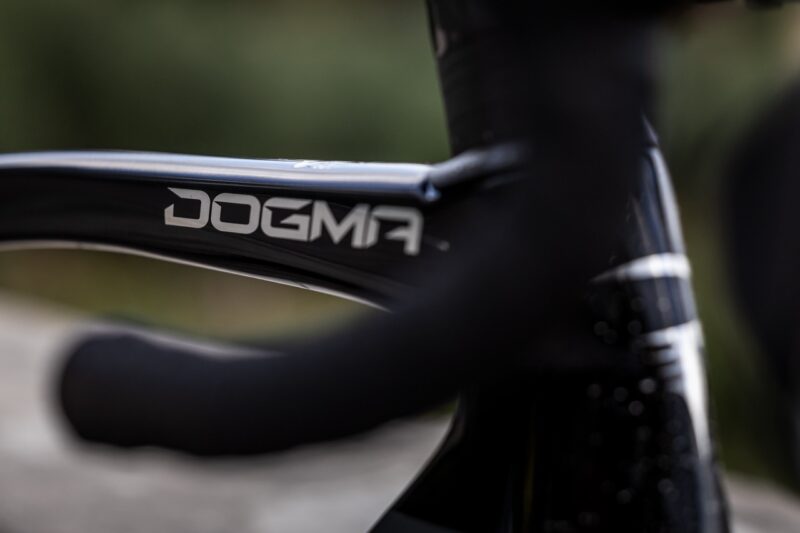


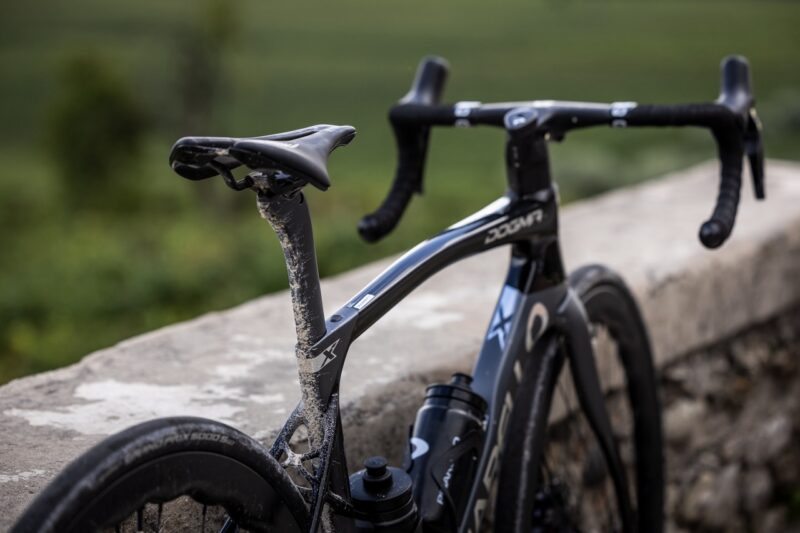
The bike claims to offer geometry somewhere in the middle of super aggressive race geometry and sit-up-and-beg comfort geometry along with clearance for larger tires. Sounds like my perfect road bike.
On paper, the Dogma X is similar to my main road bike, the Why Cycles PR. Only, the Dogma X has better tire clearance. The geometry numbers aren’t too far off, offering the possibility of an aerodynamic fit without a huge drop from the saddle to the bars.
Wide Tires
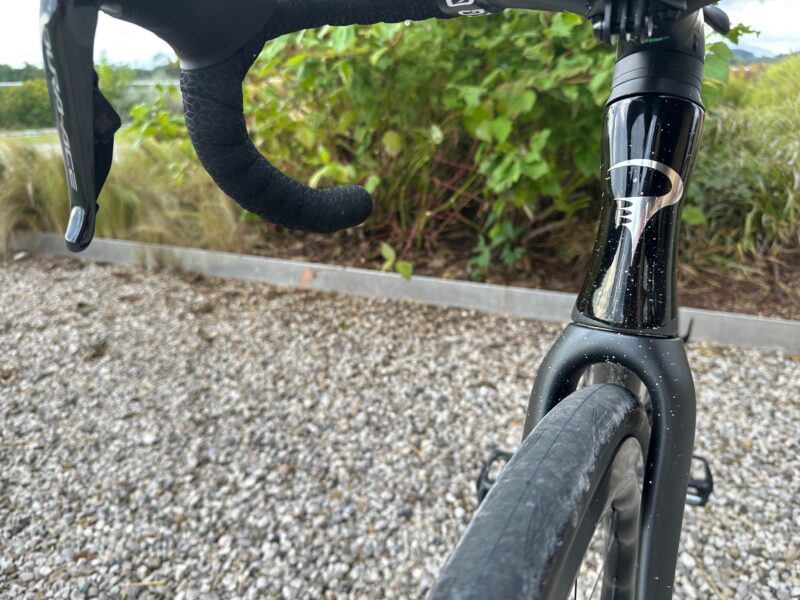
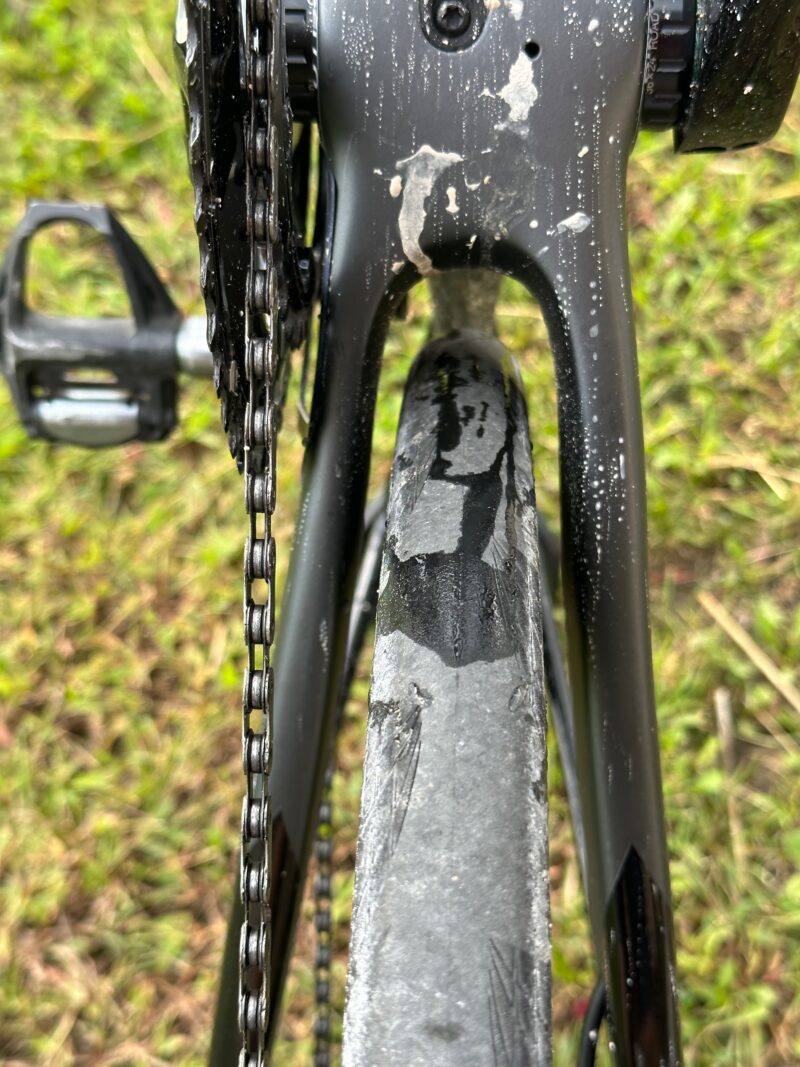
I’ve been riding 700c x 30 and now 32mm tires on the road for a few years now, and I have to say that it’s unlikely I’ll go back to smaller rubber. Coupled with wider rims, the larger tires improve the ride quality substantially without feeling like you’re giving up much in the way of efficiency.
This is all to say that I kind of knew what to expect in terms of ride quality of the Dogma X. Only, I didn’t.
My first lap aboard the new bike was not ideal (I’ll get to that in a minute), but the thing that immediately struck me was how smooth the ride was. Now, I haven’t spent much time on Princeton carbon wheels, so it’s possible the wheels themselves had a big impact on what I was feeling, but my everyday ride includes the same 32mm tires on wide, carbon aero rims.
And while that ride quality is excellent on the Why PR, it was not the silky smooth ride of Dogma X as we pedaled our way out of the vineyard and up to one of the local castles.
Off To a Slow Start
It wasn’t long until the serenity of the ride gave way to how obviously wrong the fit was for me on my initial bike. I knew that going into the ride, though. As often happens when wrangling 30+ bikes for media, and it turns out 400+ bikes for Pinarello dealers, a bike or two can end up in the wrong place. That was the case for me, as my bike did not show up to the demo area.

In an attempt to get some riding in while we searched for a replacement, I jumped on a 53cm prototype with an extra long 120mm stem. Needless to say, it was far too long for my short arms and 5’8” frame. But it did get me out on the course and allowed me a chance to warm up. So that once I was on the right bike, I was fully up to speed.
Fortunately, that came shortly after the first lap as another journalist finished his ride, and I was able to set up that bike to my fit. This 51cm frame with a 100mm stem was a near-perfect fit.
TiCR System
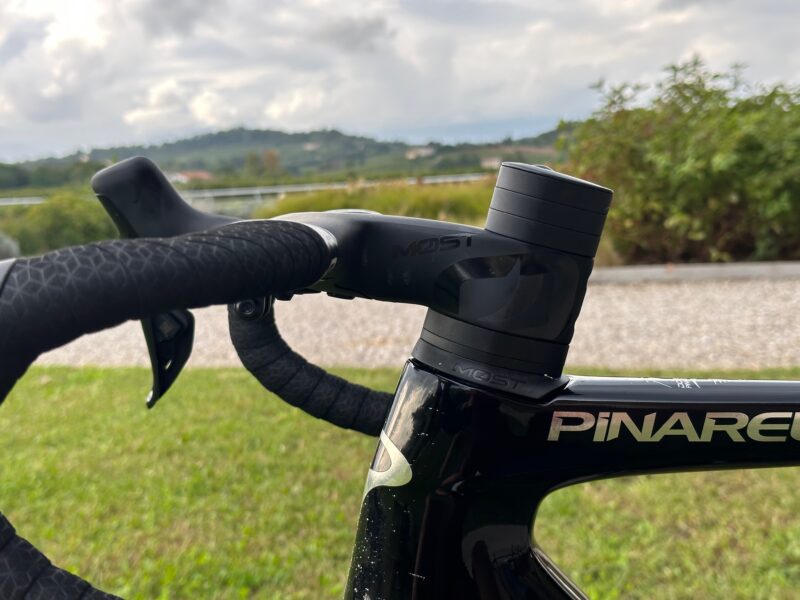
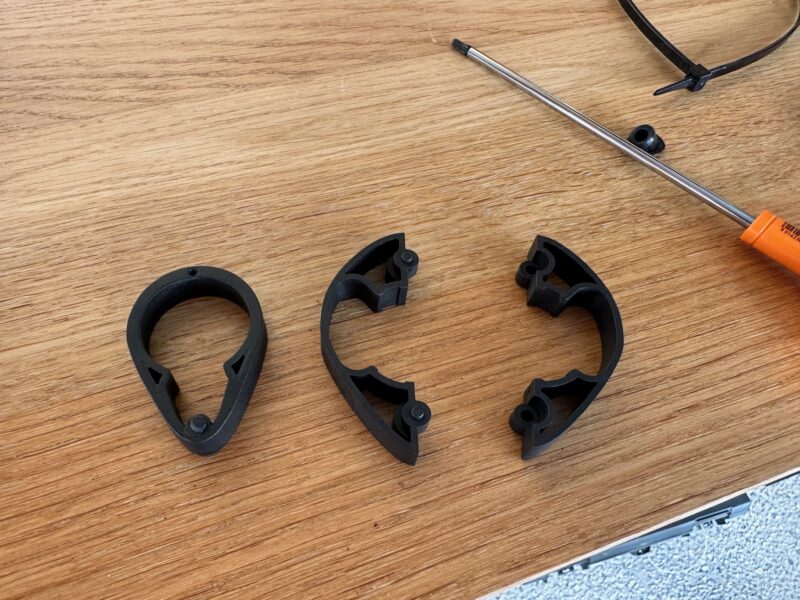
I did need to drop the stem by about 15mm, which turned out to be far easier than I imagined with the Pinarello TiCR system. While the cables routed internally through the one-piece stem/handlebar and then through the headset will still be a challenge for various maintenance tasks, the TiCR spacer system is well thought out for adjusting stem position and even removing the stem from the bike. The main spacers under the stem are split into two pieces that interlock and fit around the brake hoses.
To remove them, you simply lift one side of the spacer up, and both pieces slide out horizontally. Then, simply drop the stem to the desired position and fit the smaller spacers on top of the stem to take up the new space (if you’re not cutting the steerer). The whole process didn’t take any more time than your standard round headset with cables that aren’t internally routed.
Finding My Size

With the stem properly fitted, and the saddle height and angle dialed, I set out for another lap of the short course set up for us in Treviso. This time I was able to focus on more than the ride quality and the fit, though as a result of the bike swap, my time on the Dogma X was quite limited.
A little more than 10 miles in length, the test loop started out with an almost immediate climb with a modest gradient. The initial climb was almost a third of the loop, so it provided a good chance to feel out the climbing prowess of the Dogma X. I wouldn’t say the bike is the most adept climber, but that could also be the jet lag talking. It could also be the relatively slack seat tube and set back seat post putting me in a position that is more rearward than I’m used to.
You have to also consider that this is a bike with longer chain stays and wider 32mm tires on 21mm internal width rims, so perhaps it’s not surprising that it doesn’t climb quite as well as a race bike with shorter chain stays and narrower tires. That isn’t to say it’s a slouch on the climbs though – just not as razor-sharp as something like the Dogma F.
A Borderline Gravel Bike? Just All-Road
The trade-off is a bike that excels while seated in a wide range of road (and not road) surfaces. Our test loop was a mix of pristine new tarmac, old tarmac that was due for repaving, and full-on gravel with wheel-swallowing potholes filled with water from the recent rain. During the ride, I had to keep reminding myself to compare the Dogma X to other road and all-road bikes, rather than the gravel bikes its abilities reminded me of.
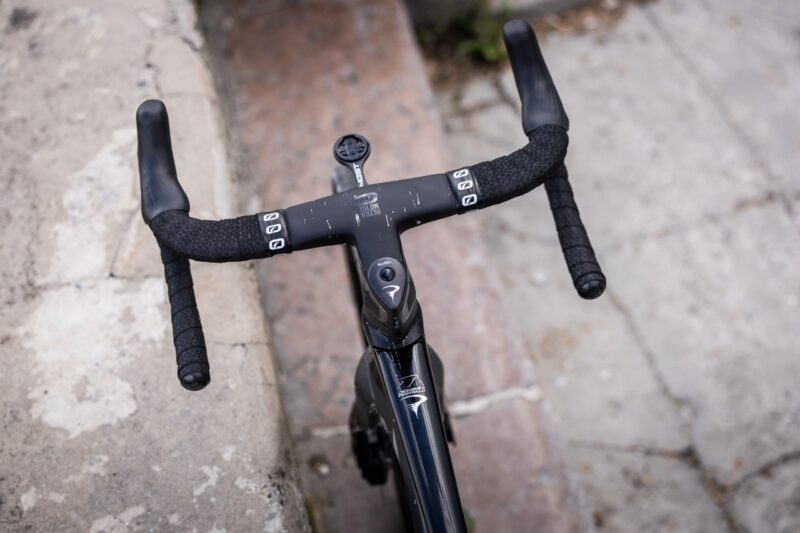
More than once, one of those massive potholes on the gravel section snuck up on me as riders in front obscured them from view and failed to call them out (or see them themselves), forcing me to either ride straight through them or try to bunny hop. Throughout the day I did both, with the Dogma X handling both without the slightest complaint. Especially for a bike fitted with such a stiff bar/stem combo, the Dogma X was surprisingly forgiving.
Keeping Composed
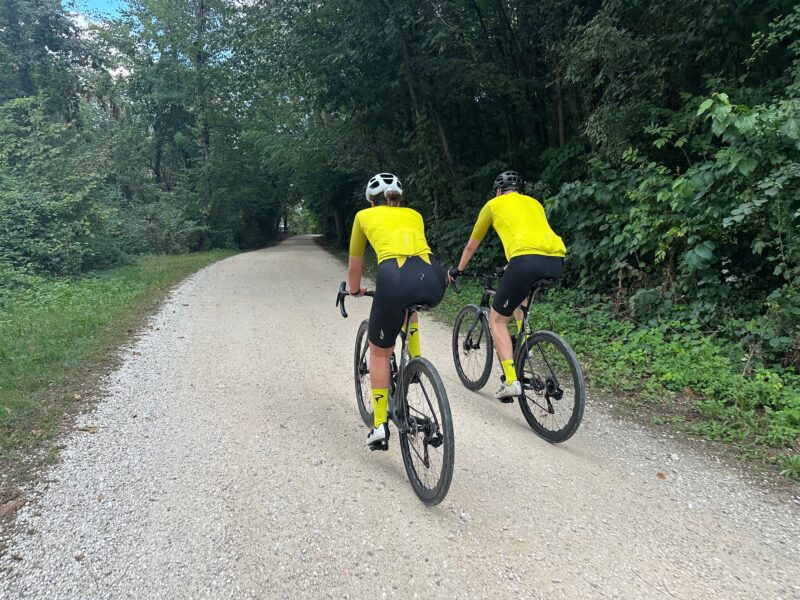
For me, one of the hallmarks of a great handling bike is the ability to remain composed, even when the rider isn’t. Unfortunately, I had the opportunity to test that out on the Dogma X as a large truck came speeding around a blind corner on the gravel section. We were heading in the opposite direction, also at a fairly high rate of speed. To make things worse, I was trying to catch up to the group as I was hanging back to take some photos.
When the truck appeared heading straight towards us, the rider in front of me braked hard, forcing me to also slam on the brakes to take evasive action. Keep in mind that I’m riding a bike with slick tires on wet gravel, in the middle of a sweeping, high-speed turn. A little too much brake locked up both wheels and all of a sudden I was in a two-wheel drift with a truck directly in my path. I’d like to think it’s my expert bike handling skills that kept it upright, but I’m confident the bike played a role in it as well.
After the slight lock-up, the Dogma X remained composed and allowed for a fairly effortless change in direction to alter my line to the inside of the turn to avoid the truck. If I was still feeling a bit sluggish after a heavy lunch, I was certainly awake now.
Descending
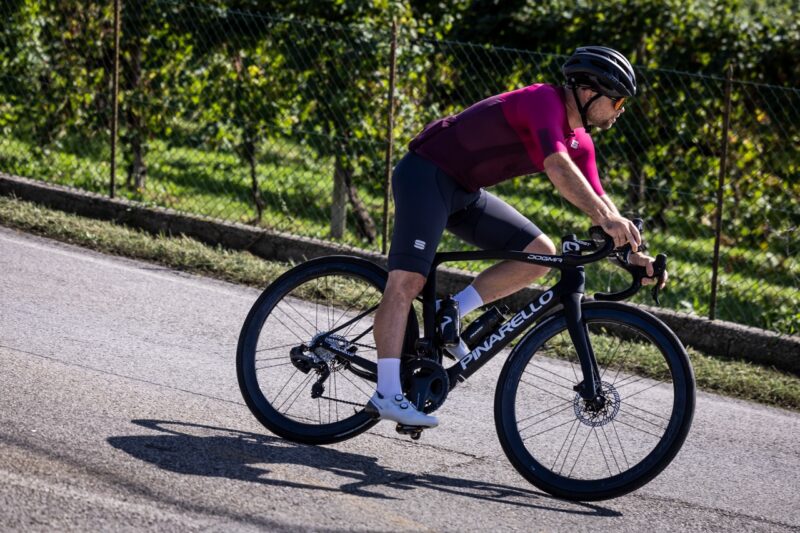
For all the climbing on the route, the descents seemed like they were over far too soon, but they did offer a good impression of the bike’s ability downhill. On sharper turns, the Dogma X took a bit of getting used to, but once I really weighted the saddle and my outside leg, the bike started to slice through corners.
First Impressions
Realistically, because of the issue with my test bike, my time on the Dogma X was too short to make an in-depth first-ride review. However, I did come away with the impression that this could still be my ideal road bike for the days that I want to go fast – and don’t want a race bike to do it.
For more on the Dogma X, and the new X-Series, check out our tech post here!
